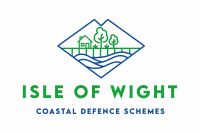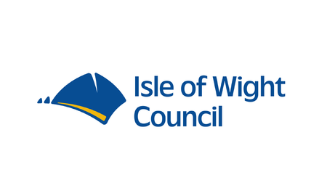Isle of Wight Coastal Defence Schemes Information Page
Overview
- Welcome and overview
- Embankment Road (Bembridge) Coastal Defence Scheme
- Yaverland Coastal Defence Scheme
- Shanklin Coastal Defence Scheme
- Ventnor Coastal Defence Scheme
Welcome to the Isle of Wight Coastal Defence Schemes Information Page.
The Environment Agency have created this page to provide easy access to information on the schemes on the Isle of Wight. The Environment Agency will be updating this site as the schemes progress, so please keep checking for what’s new.
If you would like to be added to our mailing list to receive updates on the projects, please email us and let us know which projects you are interested in.
Please see individual scheme pages for Frequently Asked Questions.
Isle of Wight Pride 2024
Colleagues attended Isle of Wight Pride with our electric van. A diverse and inclusive organisation is essential for everyone’s wellbeing and productivity. The Environment Agency welcome applications from LGBT+ candidates. Find out more here: https://environmentagencycareers.co.uk/working-here/edi/
The Environment Agency, in partnership with the Isle of Wight Council, is looking to refurbish existing coastal defences to reduce the impact of flood and coastal erosion events around the Isle of Wight coastline. Four priority areas have been identified through the Isle of Wight Shoreline Management Plan 2 (2010) and subsequent studies undertaken by the Isle of Wight Council. These documents tell us where it is appropriate to maintain the existing defence line, and where ageing and deteriorating defences are an issue. The four priority areas in need of initial investment are:
- Embankment Road (Bembridge)
- Yaverland
- Shanklin
- Ventnor

The Environment Agency have established that there is a case for some public investment in flood and coastal risk management infrastructure at all four priority areas. The Environment Agency have done this by submitting high level business cases (a ‘Strategic Outline Case’) for each location to its internal assurance group. For Yaverland and Shanklin, approval for these early business cases was received in summer 2021. For Ventnor and Embankment Road (Bembridge) approval was received in autumn 2021. Having validated the need for investment, the Environment Agency is now progressing to the next stage of business case development, which is to develop more detailed options for each location.
The overarching objectives are to:
- reduce coastal flood and erosion risk to people, property, infrastructure and designated habitat
- build on the work already undertaken by the Isle of Wight Council in their overarching Strategy/Study*, explore the scheme choices raised and confirm and deliver a preferred Coastal Flood and Erosion Risk Management option for each priority area that is technically, economically and environmentally sound, affordable now and in the future, and is adaptable to changes in future climate
- investigate and incorporate, where feasible, wider Isle of Wight Council initiatives, such as regeneration and tourism objectives and deliver broader outcomes, maximising the opportunities presented by Partnership Funding
- investigate and incorporate, where feasible, measures to contribute to the Environment Agency’s 5 Year Action Plan (EA2025) to improve the natural environment
- provide an investment structure to enable partner organisations to commit to funding contributions for delivery of the schemes.
* The linked Strategy/Studies are:
Isle of Wight Shoreline Management Plan 2, 2010
Eastern Yar flood and erosion management strategy; December 2010
The Isle of Wight Council has undertaken further studies on the Sandown Bay and Ventnor frontages which have identified the priority scheme locations and contributed to the early business case stages.
More Information
More Information
More Information
More Information
Securing national funding for flood and coastal risk projects follows a rigorous process of investigation, which occurs in several stages. Approval of the initial Strategic Outline Cases means the Environment Agency can now access funding to prepare Outline Business Cases (OBCs) for each of the priority projects. The 'OBCs' will identify a preferred option for each location with agreement from important stakeholders and partners, and set out the technical, economic and environmental justification for the chosen options. If approved, this will be followed by Full Business Cases which will complete the detailed planning and design of the projects and establish firm costs. Timelines can be found on each project page.
More Information
More Information
Be prepared for flooding
Please continue to be prepared and resilient towards flooding by signing up to receive advanced warnings of flooding. Register by calling Floodline 0345 988 1188, or visiting www.gov.uk/sign-up-for-flood-warnings. If you are already registered to the Floodline Warning Service, please check if your details need updating by visiting www.fws.environment-agency.gov.uk/app/olr/login
Get in touch
Thank you for visiting our project page.
Please contact us:
By email: IOW_FDschemes@environment-agency.gov.uk
By post: Environment Agency, Romsey Office, Canal Walk, Romsey, SO51 8DU
By phone: 03708 506 506
If:
- you are not able to access any of the information on this page.
- you have any comments or feedback on our information page.
- you have any questions or concerns about the project.
If you would like to be added to our mailing list, please email us.
For more information on how we will use and share your data, please see our Privacy Notice and our Personal Information Charter
Audiences
- Anyone from any background
Interests
- Coastal management
- Flood management
- Specific projects, issues, or activity pages






Share
Share on Twitter Share on Facebook